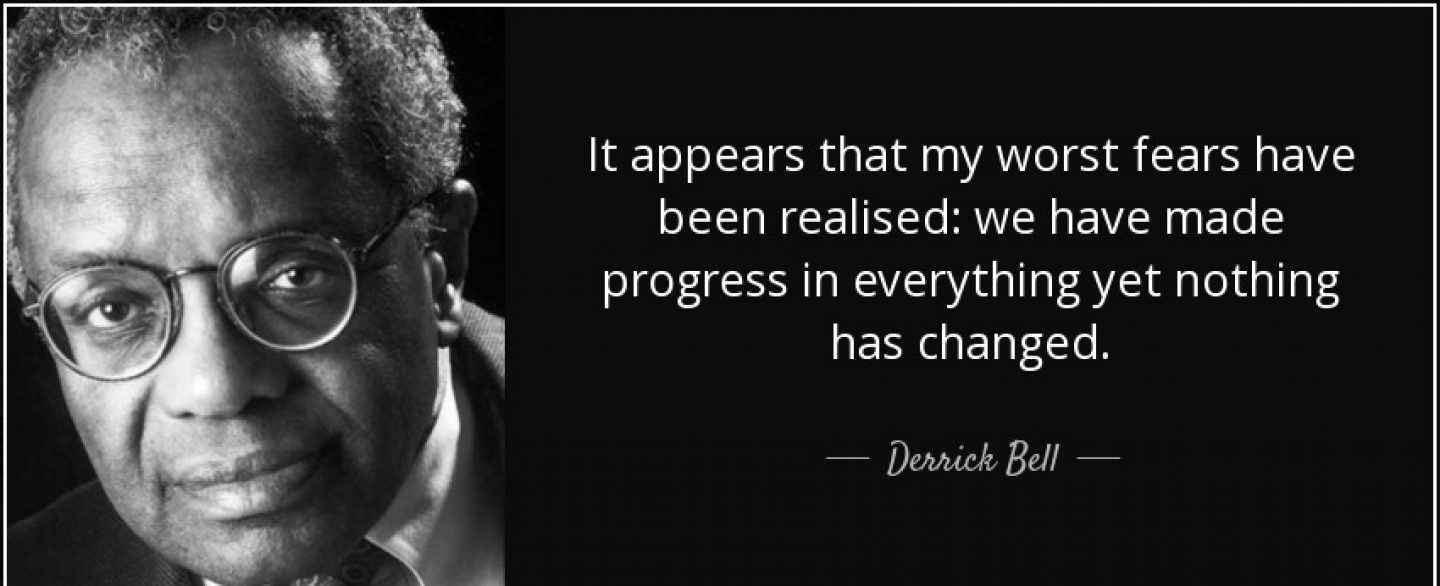The Last Black Hero was an extremely complex story that held so much weight. The story revolved around Jason Warfield, the founder and leader of Quad A (the African American Activist Association), who is severely injured in an attempt to kill him. During his recovery, he falls in love with his white doctor, Sheila. Jason wrestles with the situation and the implications of what love for a white woman would mean to his work. All the while a back woman, Neva, is attempting to call him back to his work, get his head on straight, and possibly try to work things out with her.
The story gives perspective on the complexity of interracial relationships. From Sheila’s perspective we are forced to consider the following: “Despite our love… I think I know all the reasons you may never ask me to marry you, It is such a hateful paradox. You have fought racial barriers imposed by whites. Yet your concern about a barrier erected by blacks threatens our future together” (Bell, p. 73). Neva says: “You betrayed us! You told us over and over these five years that Quad A’s work is too important to risk a relationship with me or one of the other black deputies. But now all your concerns evaporate, become mere ‘image,’ after a few months of close contact with a white woman. For her, you’re willing to risk destruction of your organization as well as the hopes of a vast number of black people… Jason, tell me, why do the very men black women pray for– sensitive, successful warriors for truth and community, courage and integrity– always marry white women– women whose interest in our culture just happens always to include taking our most desirable men?” (Bell, p. 82).
Is Jason justified or at fault in this situation? Hot takes only…
Divining a Racial Realism Theory revolves around a Black law professor out in the Oregon wilderness. He gets shot at and then engages in a conversation with a white woman who, at first, seems to be the enemy, but then is shown as an ally. She is part of a fictional group of white people prepping for a coming racial cleansing by planning where and how to shelter Blacks. She discusses the idea of racial realism and states the four major themes: There has been no linear progress in civil rights, more economic discussion and looking at blacks’ real position in the socioeconomic realm, finding satisfaction in the struggle, those battling opression must look at racism realistically so they don’t repeat with their children what their grandparents suffered (Bell, p. 98).
A strong theme throughout the text is that theory, books, philosophy, is useless without real world application. People need to be on the front lines and in the fight to see real progress and change.
What does being on the front lines as a college student look like? Has there really been no linear progression in civil rights? How do we effectively stop ourselves from projecting our own racial trauma onto those we love?
